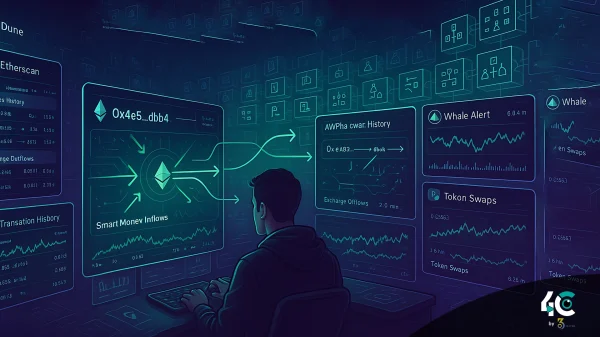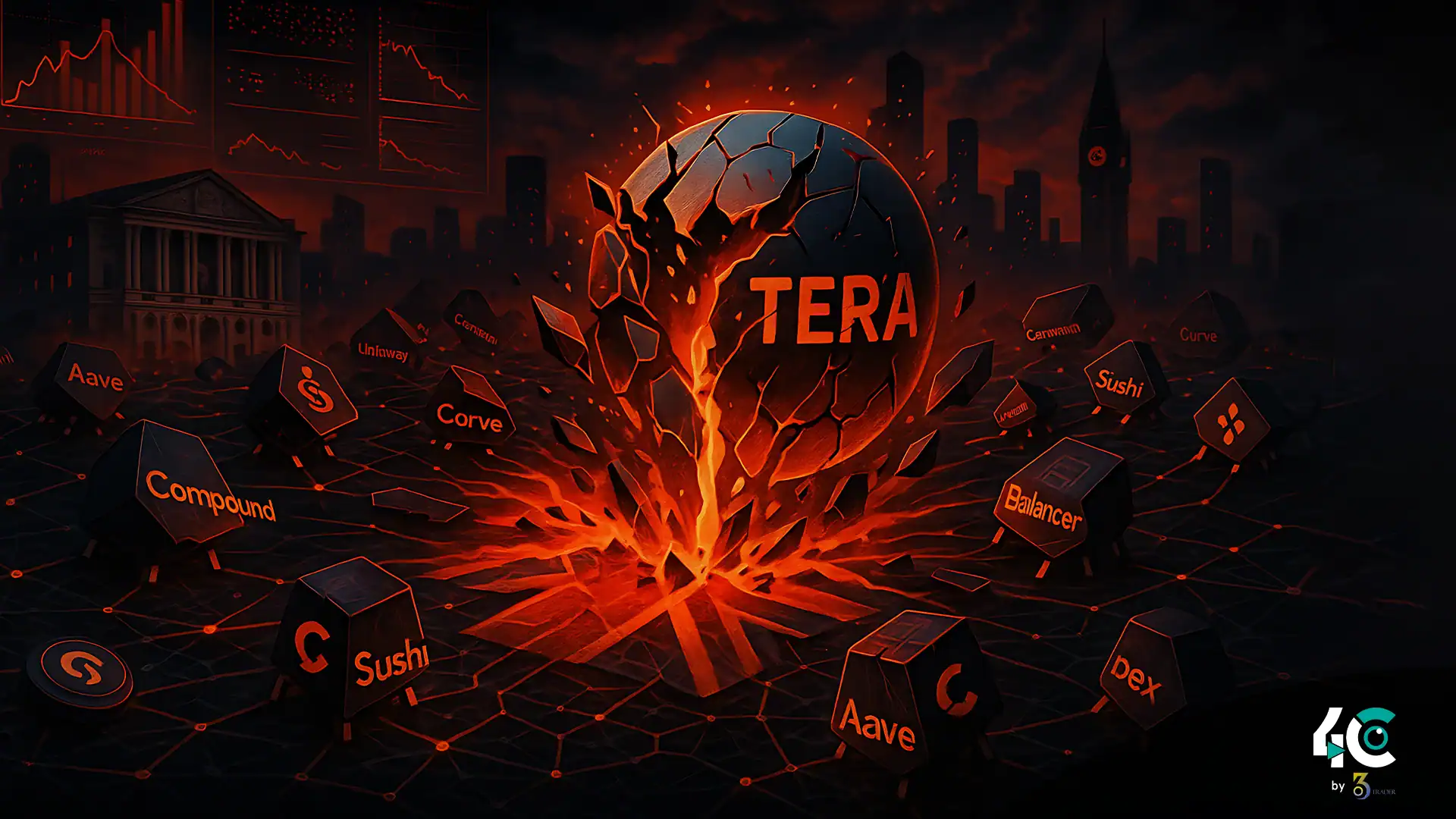The Anatomy of Systemic Contagion in DeFi
The effect that one protocol has on others is referred to as systemic contagion. This occurs when stress in one protocol attacks another due to shared dependency. Examples of such dependencies include liquidity pools, collateralized assets, and cross-protocol integrations. DeFi’s composability causes risks to be transmitted more quickly than in traditional finance. Key factors contributing to contagion include:
- The protocols use volatile assets like ETH or staked tokens as collateral that can lead to liquidation during downturns.
- The close link between platforms is created through borrowing from each other and liquefying pools.
- Stablecoins and yield-generating methods often lack robust safeguards, making them vulnerable to depegging or collapse.
The Collapse of Terra: A Case Study
The collapse of the Terra ecosystem exemplifies how systemic contagions spread in DeFi. Here’s how it unfolded.
1. Initial Trigger
Affected: A massive withdrawal of funds has drained reserves of TerraUSD (UST) that pegged it to $1.
Panic selling caused UST to fall underneath $1. Accordingly, people began redeeming their LUNA en masse, causing hyperinflation on the token.
2. Cross-Protocol Stress
As UST depegged, crypto lending platform Anchor saw the withdrawal of billions of deposits. This crippled Anchor’s yield-generating abilities.
Protocols such as Venus and Abracadabra apparently using UST as collateral suffered cascading liquidations as UST lost its peg.
3. Broader Market Fallout
Fear spread to other stablecoins as Tether briefly depegged amid various redemption pressures.
When prices fall, the various lending protocols serve margin calls one after another, which triggers further selling (liquidation) and pushes the prices down further.
Key Takeaway
The crash of Terra showed that tightly connected DeFi protocols intensify individual failures and end up creating systemic failure.
On-Chain Signals of Systemic Risk
To avert collapses, the identification of warning signs is important. The insights regarding emerging risks are on-chain data.
1. Collateral Health Metrics
If the LTV is high, there is a risk of liquidation. “Increase in liquidation events suggests rising stress.”
Over-reliance on volatile collateral (e.g., LUNA-backed loans) makes the system fragile.
2. Liquidity Fragmentation
With imbalances in pools within a stablecoin pair, it can signal a depeg or an arbitrage opportunity.
Withdrawal patterns that show large outflows from lending protocols or decentralized exchanges may signal panic exits.
3. Network Connectivity
There may be points of failure due to cross-protocol dependencies. For example, the collapse of Terra made Anchor vulnerable because it relied on UST.
Smart contract interactions — when contracts interact frequently, a problem in one contract can lead to more failures.
Network Structures That Amplify Risk
Some structural features of DeFi ecosystems amplify systemic contagion.
1. Centralization of Liquidity
The centralized ownership of liquidity by Curve Finance and Uniswap may allow them to benefit at the cost of their users.
Movement of Large Holders: Whales moving wallets en masse can destabilize markets – just look at what happened during the Terra run.
2. Algorithmic Feedback Loops
Supply or price adjustments with OlympusDAO-type mechanisms can backfire during volatility and accelerate downward spirals.
Recursive leveraging occurs when a borrower uses borrowed assets as collateral for other borrowings.
3. Lack of Circuit Breakers
Traditional markets use trading halts to contain panics. DeFi does non-stop work and makes a crisis worse.
Lessons Learned: Preventing Future Crises
The downfall of Terra provides many lessons to avoid systemic contagion in DeFi.
1. Strengthening Stablecoin Mechanisms
Stablecoins which are fully backed with collateral lessen reliance on algorithms that can fail.
Using several different kinds of assets as reserves to minimize exposure to a single point of failure.
2. Enhancing Protocol Resilience
Varying the LTV thresholds dynamically with respect to the market conditions to prevent cascading liquidations.
Decentralized insurance products can provide a safety net against loss.
3. Improving Transparency and Governance
Real-Time Monitoring: Instruments like Dune Analytics and Glassnode allow for advance warning of threats.
In an emergency, the community’s decisions are made quicker than centralized decisions.
4. Building Modular Systems
Reducing interdependencies when possible, so that issues do not cascade.
Backup Systems: Stopping the transaction would help from collapse of the system in worst case.
Final Thoughts on Resilient DeFi Ecosystem
Collapse of Terra shows the possibilities and dangers of decentralized financial systems. The innovative DeFi composability system also implements some unique characteristics including smart contract-based liquidity pools. By assessing past crashes & utilizing signals from the blockchain, parties can create systems that won’t collapse or cause failure.
It is important that all actors maintain the balance between safety nets and decentralization so that DeFi benefits people and not more financial instability.
Conclusion
Systemic contagion in DeFi arises due to the connectedness of protocols, liquidity, and weak mechanisms like algorithmic stablecoins. Many historical crashes like the collapse of Terra reveal that overcollaterization risk, liquidity fragmentation, and network architecture amplify the failure. A crisis can be predicted with early warning signals like weakening collateral health, pools imbalance, and spikes in withdrawal. To avoid more viruses in the future, DeFi must use reserve-backed stablecoin, dynamic risk parameters and modular designs to limit interdependence. By incorporating these lessons, the sector could take a step forward to a more resilient and sustainable financial ecosystem.



































